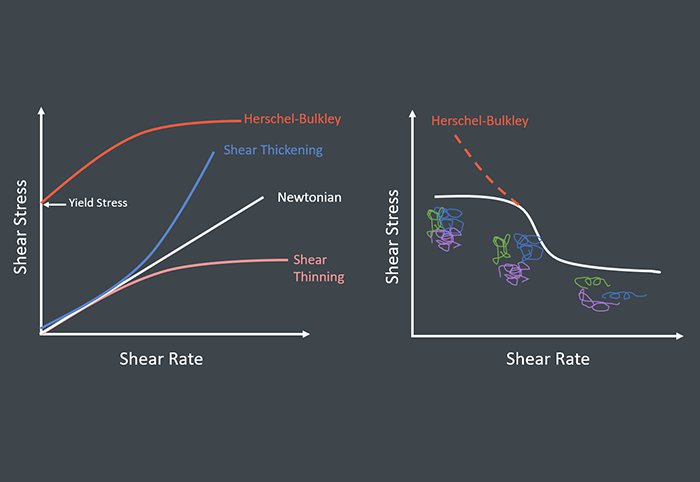
The importance of viscosity model
ESPECIALLY FOR OUR USERS
It is not a mystery that the viscosity of materials, is a key feature in injection molding of the material. And as important is the mathematical model, which describes the viscosity in the simulations. In this article we will briefly go through the most important models in Moldex3D and the things that the user should consider before starting the simulations. Our focus will be on thermoplastics.
Viscosity, the property of a fluid that determines its resistance to flow, plays a pivotal role in injection molding. Understanding and accurately modeling the viscosity of the molten plastic material is vital for predicting flow behavior, pressure distribution, temperature gradients, and the final part quality.
Modeling viscosity in injection molding simulations is not a straightforward task. Molten plastics are non-Newtonian fluids, meaning their viscosity changes with shear rate and temperature. Several factors complicate the modeling process:
_ Non-Newtonian Behavior: Molten plastics often exhibit shear-thinning behavior, meaning they become less viscous as shear rate increases. This behavior can vary significantly among different polymers, making it essential to select an appropriate viscosity model.
_ Temperature Sensitivity: Viscosity is highly sensitive to temperature changes. Accurate temperature profiles throughout the mold are critical for predicting flow behavior accurately.
_Pressure Effects: Viscosity can also be pressure-dependent, especially at high pressures encountered in injection molding. This pressure sensitivity must be accounted for in the chosen viscosity model.
Choosing an appropriate viscosity model significantly affects the accuracy of injection molding simulations. There are several commonly used viscosity models, including the power-law model, Carreau-Yasuda model, and Cross-WLF model, each with its strengths and limitations.
_ Power-Law Model: This model is simple and easy to implement, making it suitable for quick estimations. However, it may not accurately capture the shear-thinning behavior of some polymers.
_ Carreau-Yasuda Model: The Carreau-Yasuda model is more complex and provides a better representation of shear-thinning behavior.
_ Cross-WLF Model: This model accounts for both shear-thinning and pressure-dependent effects, making it highly accurate for a broader range of materials.
_ Herschel-Bulkley model: This model accounts for materials that require a certain level of stress (yield stress) to start flowing. For example, materials which are highly filled, this model is necessary.
Accurate viscosity modeling is fundamental to predicting flow behavior, pressure distribution, and temperature gradients within the mold, ultimately affecting the quality of the final product. Moldex3D Labor performs full material characterizations including the viscosity and chooses the best model to fulfill the material and the production requirements.
